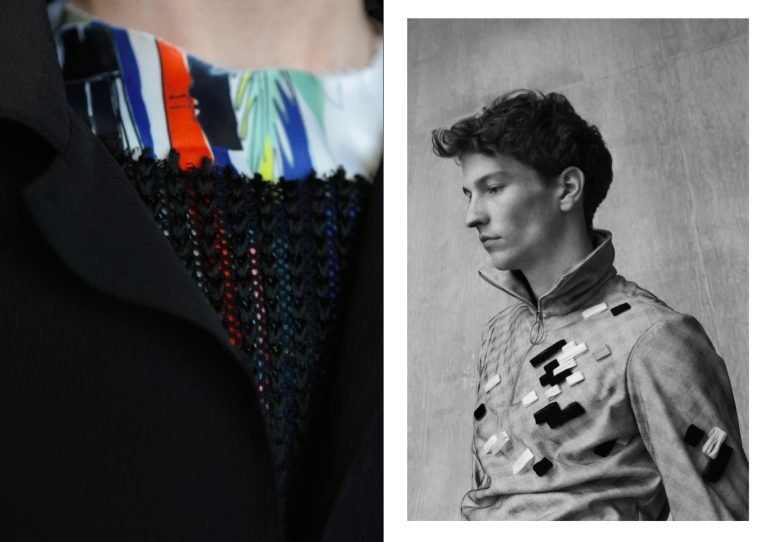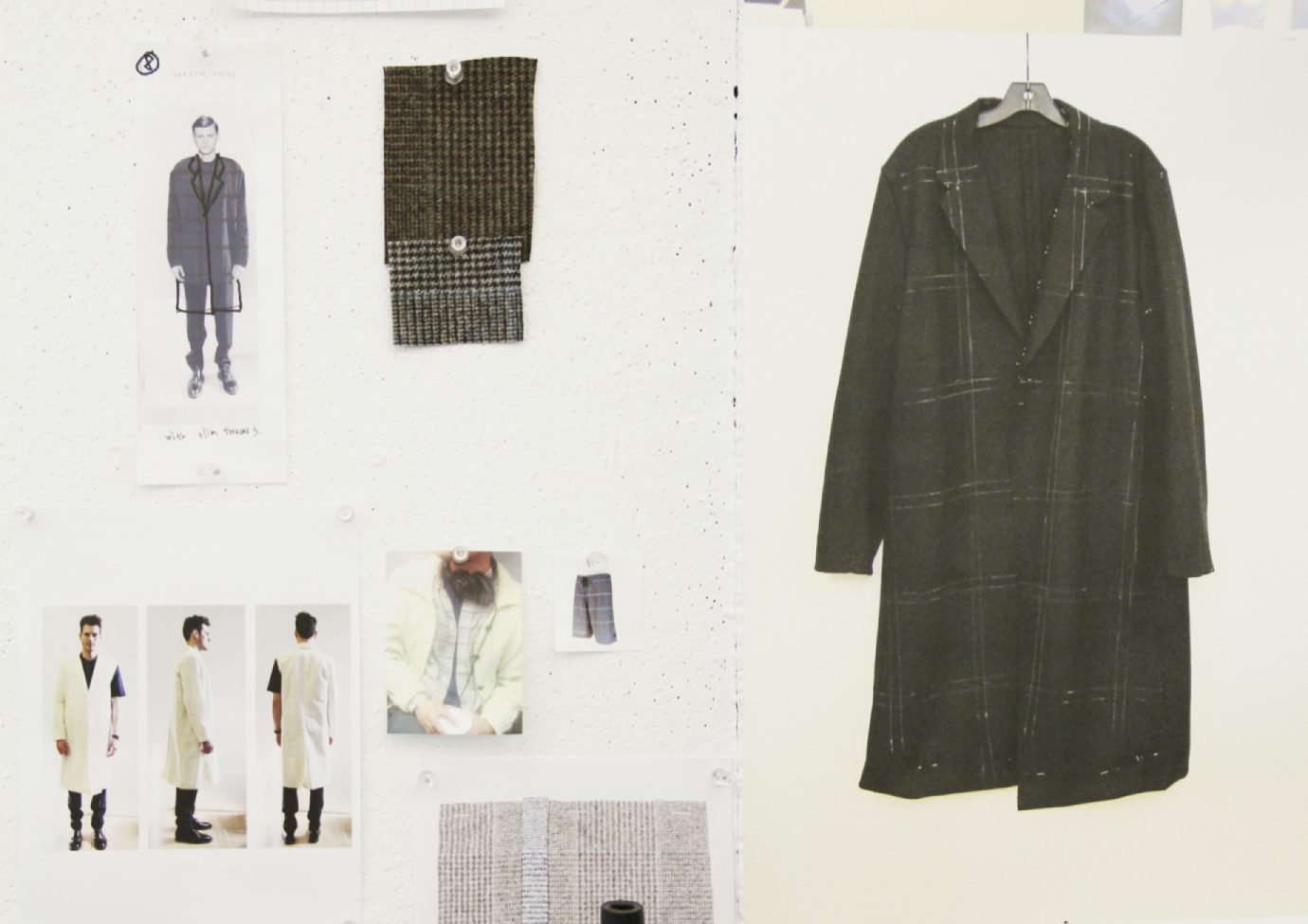“When you do menswear, you work with existing archetypes, like jackets and trousers. There is no weird jersey magma that could be a dress.” – Chloé Nardin
In your past interviews, you’ve been describing your collections as “cute sportswear”, which I think it’s such a lovely way of defining your work, but there’s so much to unpack! Why did you decide to focus on menswear and how do you make it look softer and more feminine?
The industry is still very segmented: if you have a collection and you want to sell it, you have to label it either as “menswear” or “womenswear”. Even when you try to stay in the middle, they will pick a side for you. And I think designing for men is a totally different practice from designing for women, more realistic and down-to-earth. When you do menswear, you work with existing archetypes, like jackets and trousers. There is no weird jersey magma that could be a dress.
I remember when during my BA I was doing womenswear and I was so unhappy with the final pieces. I thought they were very contemporary, like for a cool Instagram picture, but at the same time, I knew nobody would have worn them. I’ve always had this great care for reality and function and I didn’t really know what to do with it in womenswear. Then, during the MA I had an epiphany. I once imagined a guy wearing one of my outfits and I was like “wow, that works really well!” I started to picture all those looks worn by men, and that’s how I transitioned to menswear. I think that whenever you create something, you have to be aware that your inspiration and your creative emotional balance can shift so much. At first, I was a little scared because I thought this could be just a mood. But then it felt so good to the point I decided to build a brand around it.
This shift from an academic to a product-oriented mindset should be physiological, when leaving school. Do you think something has changed since opening your brand, or have you always been very aware of the importance of the product?
I thought I was! I remember thinking the collection was sellable. That’s why I always struggled during Central Saint Martins. What I’m doing now is what I’ve always wanted to do, while the MA is all about crazy stuff and creative development. And you can’t have that by making a piece that you will be able to industrialise.
“At CSM, you spend years doing unhinged, creative stuff that you really have to think through. It’s very intellectual; it’s not going to help you start your own business, but it balances out that freedom of creativity with a great dose of awareness.” – Chloé Nardin
And do you agree with this approach? If you were the one on the other side, would you praise the work of a student because or despite it being sellable?
I think each school is different. Central Saint Martins has a highly creative approach, so you come out with a designer degree, rather than a business or product developer one. In that sense, CSM is excellent: you spend years doing unhinged, creative stuff that you really have to think through. It’s very intellectual; it’s not going to help you start your own business, but it balances out that freedom of creativity with a great dose of awareness. While at Westminster, their technical abilities are so much better than ours. Maybe I should have gone there, but I wouldn’t have gone as deep as I went with CSM. Being in the real world now, I don’t see commerciality as something bad, plus I’m having a lot of fun.



































